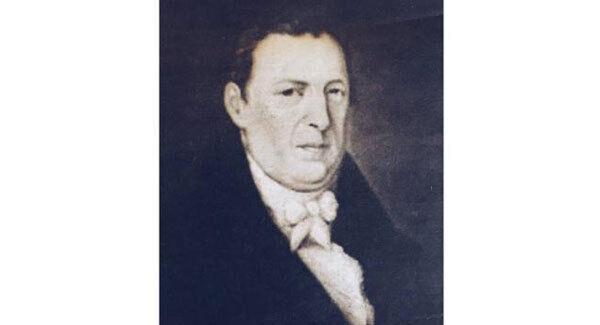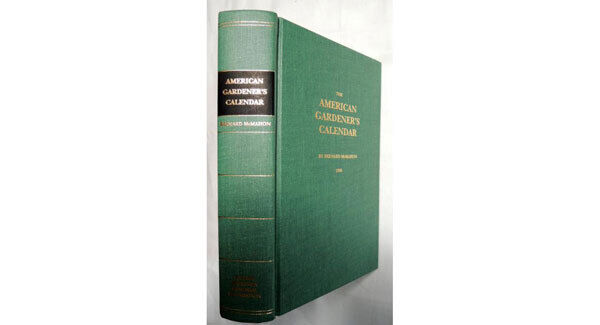And the nomination for best Irish gardener goes to ...

If Irish horticulture was to have a hall of fame then Bernard McMahon (1775-1816) should certainly be on the list. If American horticulture was to have a hall of fame he would definitely be first in.
Of course he is not on our coinage, stamps or commemorated in a street name, statues, botanical garden in his native town or on the Irish educational syllabus, because we don’t really promote or celebrate our own in Ireland.
What’s with that? I was recently at a seminar with a room full of garden centre owners and people from the horticultural industry and the speaker asked for someone to call out a garden guru.
‘Monty Don’ was called out from the back, ‘Monty Don’ from the front, ‘Monty Don’ to my left. That was the only name offered. Until I shouted up “Fiann Ó Nualláin”.
My guru advises against being a guru so it wasn’t a pitch.
I am a fan of the Marx Brothers (Groucho et al) and there is the story of Harpo, who acted mute on stage and screen, how he once gave a harp concert and at the end left the stage, ran around and into the auditorium shouting “more more”. Still cracks me up.
So shouting my own name was half vaudeville homage (and to be honest I probably would have done it anyway), but I really wanted to register my annoyance that nobody was shouting out Helen Dillion, Dermot O’Neill, Gerry Daly, Kitty Skully, Peter Dowdall or any Irish expert — even a Facebook one.

I have nothing against Monty Don, I just despair at how much we buy into cultural icons from Britain and America to the displacement of native talent.
It’s kind of lazy, if not ill-informed. I have been writing these hort hero articles throughout the past year to try rectify that a bit. These are the guys I am proud off, these are the guys who have put Ireland on the map, and these are the guys celebrated around the world.
So the guy this week is a true garden guru, to a whole nation, and one of his devotees was the president of that nation, Thomas Jefferson.
Before McMahon hit American shores the majority of available books on gardening were based upon English horticultural practices and featured exclusively plants that were readily available in and acclimatised to Britain. Difficult for an American gardener to replicate.
McMahon sensing an opportunity or just embracing his new home, put together an horticultural treatise called ‘The American Gardener’s Calendar’ in which he began to evolve a subtle shift away from strictly English traditions and through his seed-supply business he began to celebrate/ promote and commercialise indigenous American plants suitable for cultivation as ornamentals and food crops. He also championed fruit cultivation and encouraged orchards to be grazed with livestock.

Over several editions, he set his calendar to reflect the month by month tasks in rhyme with American climatic seasons.
The book and seed catalogue caught the eye of Thomas Jefferson — a keen gardener and horticultural advocate who initiated a long relationship with McMahon and they collaborated together on creating the gardens, orchards and vegetable production at Monticello, Jefferson’s home, and now a Unesco world heritage site.
I am not a fan of places built on the whipped backs of slaves or the exploitation of the famished.
I was only a kid on a school trip when I first got to visit the Powerscourt estate in Co Wicklow and the beauty of it blew me away, but I can still feel in this moment, the residue of the overwhelming sadness that overtook me when I learned that the gardens there were built with Famine Relief schemes as a source of labour.
I don’t belief in the excuse that it was the times. Inhumanity is inhumanity in any age.
I don’t know if the slavery association thing taints McMahon, but it is not his role for helping turn the plantation at Monticello into exquisite gardens and vistas that gets my hall of fame vote. It is how he helped construct an American gardening narrative and even an American gardening pride.
His focus on native plants in his seed catalogue gave American gardeners the chance to not devalue indigenous species and to create real and lasting gardens in keeping with American climatic seasons.
American gardens could, for the first time, break free of colonial complications and garden as Americans.
And yes, that was as political then as it sounds now. When you think that Jefferson once said that “a heavy aristocracy and corruption are two bridles in the mouths of the Irish which will prevent them from making any effectual efforts against their masters”, he was trying to learn from our mistakes, to make an America beyond British influence.
And that included how it was gardened.
The Irish who got away unburdened themselves from those bridles, as did McMahon. His book was an everyman book and did not pander to the landowners alone.
Instead it educated whomsoever wanted to grow — from a window box to a patch of ground, right up the prestige gardens of a president. In that, he empowered the people, all the people, to garden — he did not end slavery or overthrow other corruptions.
However, as we know, gardening is a blessing and sharing that among the masses was a revolution in its own way.
The book was so popular among the people that it was reprinted for over 50 years and in that time updated to 11 editions. The final edition was published in 1857, 39 years after his death.
For those who read the lines: “What can be more beautiful than our Lobelias, Asclepias, Orchis, and Asters? In Europe plants are not rejected because they are indigenous; and yet here, we cultivate many foreign trifles, and neglect the profusion of beauties so bountifully bestowed upon us by the hand of nature”, it was the starting point for American gardeners to tell their story and explore horticulture in an American context.
Thomas Jefferson had a first edition and cherished it as a ‘gardening bible’ and in getting to know McMahon, he soon realised a spirit that could forward American pride, so he enlisted Bernard to catalogue and propagate seeds and roots from those specimen plants collected over the course of the Lewis and Clark Expedition.
And here is the big vote. The plants we owe to those endeavours include Camassia quamash, Nicotina spp, Helianthus tuberosus, Echinacea angustifolia, Ribes aureum, Arctostaphylos uva-ursi, and of course the Mahonias (named after McMahon himself) — certainly my garden would look radically different without them.
Sometimes karma is instant, sometimes synchronicity is hilarious.
Halfway through the last paragraph I got a phone call from a friend, I said: “I’m just in the middle of finishing a piece on Bernard McMahon the guy Mahonias are named after.”
“Ah yeah, I heard Monty Don say something about that the other night,” came the reply..









